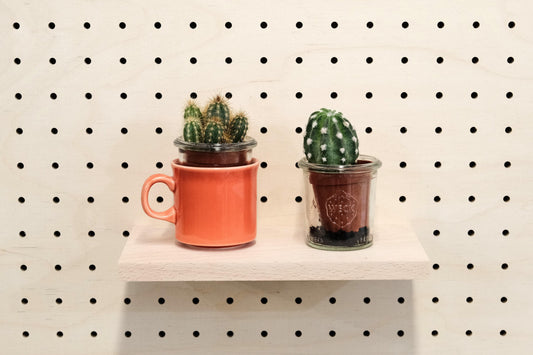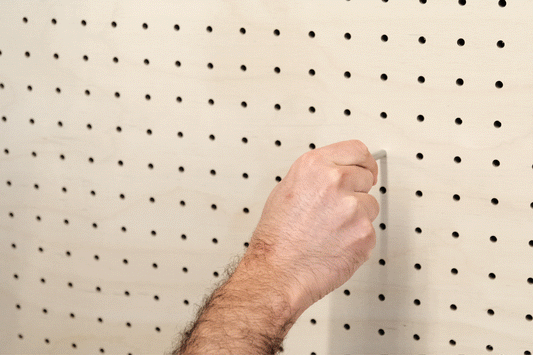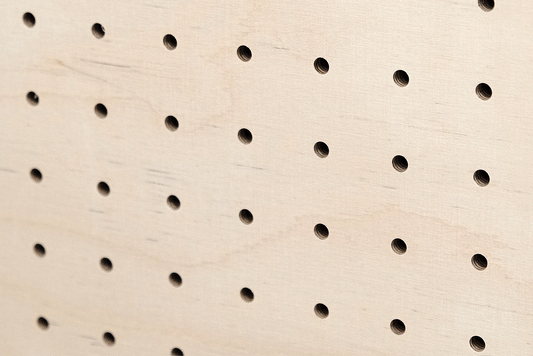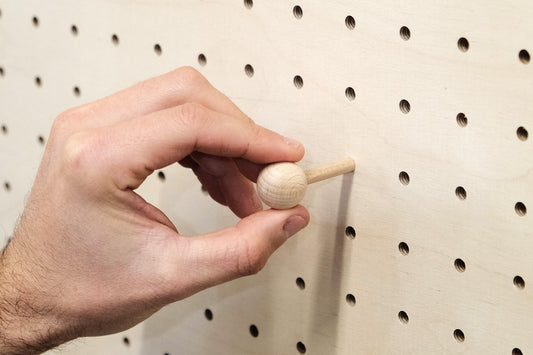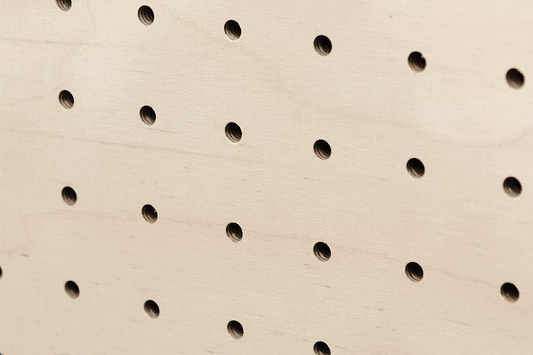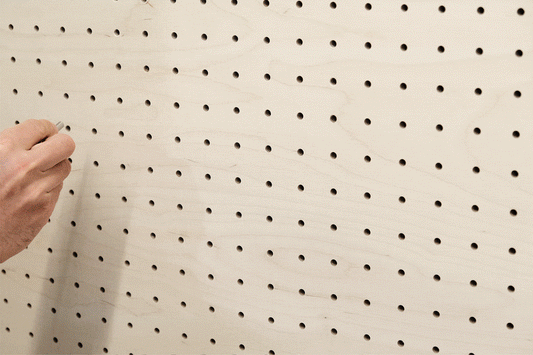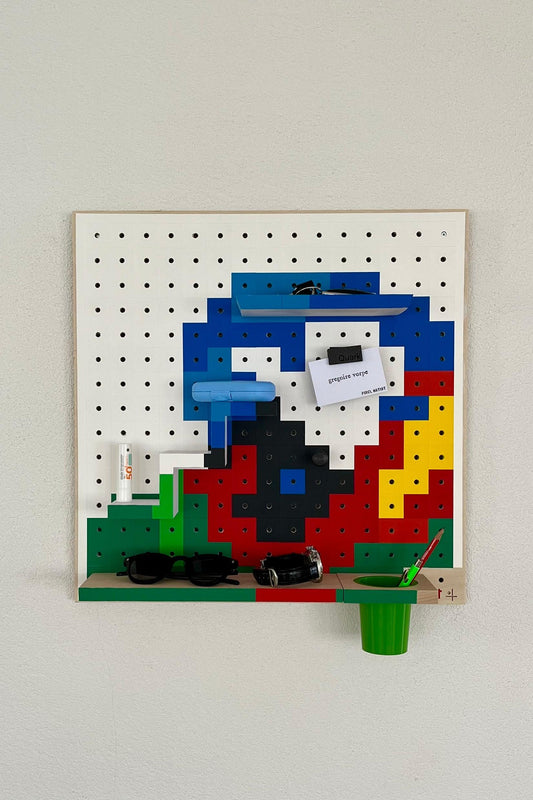Today, our eyes are so accustomed to observing smooth and clean images that a pixelated photograph is perceived as a resolution error. However, there is a real trend towards pixel art that we can call "Pixel Art" . Between nostalgia and modernity, find the best artists who have marked this movement.
In the big lines and the small squares… An artistic movement that still seduces
Pixel Art emerged in the 70s with the arrival of computers in homes, and thanks, in large part, to the birth of graphics, especially video games. Among them, arcade games like Space Invaders or Pac-man. Thanks to progress, more and more people have access to computers and are confronted with pixels every day. The term Pixel is also much older. Etymologically speaking, the word pixel comes from the abbreviation of two English words "pictures" and "elements". Literally, it can be translated as "image element". Now that this literary anecdote has amazed you, we can move on!
The Pixel from a technical point of view appeared in the 1880s with the arrival of the first screens. These are the points of an electronic image. This invention is due to the computer scientist Russel Kirsch, a pioneer of digital imaging .

The pixel draws its source from very ancient arts. We can even say that it is an ancestral technique because during antiquity it was already used for mosaics for example. In reality, we find these images from small colored units in a good number of techniques in traditional art during the centuries. In impressionism, in cubism and still in embroidery.



Visually, Pixel Art has always been present in art, but it was in the 1980s and 2000s that the term emerged and with it, many artists. Pixel Art is a varied art, rich in proposals and above all limitless. The recipe? Imagination, small squares, colors and that's it (well, almost...)
Are you interested? To inspire you, here are some of the best Pixel Art artists.
The pioneering artists of the movement
Invader: the artist who breaks the codes by including Pixel Art in street art

He was born in Paris in 1969. He studied at the École nationale supérieure des beaux-arts in Paris. He began his career in 1996 in Paris, posting his works on walls, then he conquered the world by posting in major international cities. A follower of an “old-fashioned” style, he creates his works from particular materials such as tile mosaics or tesserae.

He defines himself as a hacker of public space by spreading a mosaic virus in the streets. Moreover, his works are not placed at random. The artist meticulously chooses the ideal place to implant his virus. The artist prefers to exhibit in places where there is a high number of visitors. Like a website, his virus must be able to penetrate the system. However, he also sometimes chooses more isolated spots. He sees himself as an urban acupuncturist. Each of his works is unique. His characters are first inspired by his childhood game “space invader”. Today, he is expanding his repertoire to offer us numerous references to pop culture.
Today he has already created more than 4000 works in 79 different cities. And yet, no one has ever seen his face! In short, he is a very versatile artist who offers us a mix of street art and Pixel Art to create unique works of their kind and seduce the world.
So Invader inspired you as much as it did us?
Pixel Art by the eboy collective

Eboy is a Los Angeles-based collective of Pixel Artists founded in 1997 by Kay Vermehr, Steffen Sauerteig, and Svend Smital (3 from Berlin and 1 from New York). Their complex “modern” illustrations are always full of cinematic, musical, and cultural references. This results in rich, colorful creations where you can always find a reference that will make you smile. Not to mention their humorous touch that can be found on their various posters. Their works have been declined in t-shirts, souvenirs, and posters. Some are even exhibited in galleries. But think about the transport of artwork !

They started working with pixels because they liked the idea of creating and imagining a universe made of pixels.
They work mainly with Photoshop but also with the Pen tool. It is a simple tool that works like a pencil. Thus, with this process they constitute basic elements, trees, houses, and human beings that they memorize in a database. After that, they compress in their library to then merge them and articulate them together. They stand out in particular for the finesse of their line, very playful.
Very inspired by Pop culture
Their influences are inspired by pop culture. TV, toy commercials, LEGO universe, computer games, news, and magazines. Kai was very inspired by the Nintendo universe because he played Nintendo DS. The other members of the group lived in East Germany, where video games were very little present or even nonexistent.

Their work reflects a colossal investment: "If we're not working on other projects at the same time, it takes about six to eight weeks to complete a very detailed cityscape, three eBoys work on it, almost full time. But, if we have to do it in our free time, which is often the case, it could take years to finish a photo since we can't dedicate that much time to it." Their style has earned them a cult following among graphic designers around the world as well as a long list of clients. They have completed other projects such as Peecol plastic toys with Kidrobot , and a line of wooden toys is to be produced under their own label. Basically, we are dealing with a versatile, creative and ultra-productive collective, so Cap?
Pointillism and Pixel Art: Ced Vernay

Ced Vernay is a French artist who lives and works in Marseille. He uses the point or pixel technique. Very inspired by Roman art, his art is between Roman mosaic and pixel. A mixture of modernity and tradition, a form of contemporary pointillism based on mathematical notions.
A bit complicated all that! But you'll see it's worth it. A unique contemporary art concept, it is inspired by modern art galleries or artists like Andy Warhol, Roman Opalka or Yayoi Kusama. Doesn't that mean anything to you?



They are innovative artists playing with pointillism. Ced Vernay did not launch himself into the world of Pixel Art coupled with pointillism by chance. He worked for many years in web design and IT. By working around the pixel he intends to question us on our relationship to the screen but also to explore an abstract and figurative universe.
Pixced an artistic concept and monumental paintings that can be separated to share

The artist has embarked on large-scale projects. One of the characteristics of this atypical work is to assemble 20 x 20 cm squares, all different, which he calls PixCed.

“Each one is unique, with characters, acronyms, mathematical formulas, drawings from his imagination or associated with things he wanted to say". It is also a participatory work, in fact you can add your own pixel to the work. Buying one or more PixCed also means being part of a community around a work of art: the Pix'Ced Community. The latter may one day come together to bring these monumental works back to life. Buyers will therefore one day be able to become actors in the reconstruction of the monumental work. In addition, for each pixel purchased, a tree is planted via the Reforest'Action association. Ced VERNAY decided to offer this green gesture to his collectors because he is particularly sensitive to environmental problems. He has always tried to create works where the material is recycled. Pretty great, right? So why not you?
Quark makes his Pixel Art with PIXI Quark
We are so inspired at Quark that we suggest you start creating custom Pixel Art. Not bad, right? And yes, we are also fans of Pixel Art (you will surely have understood!). That is why we launched the Pixi Quark operation some time ago. It is a Pixel Art game in the form of a puzzle. Depending on your desires, you can get a kit of 50 black pixels and 50 white or 100 colored pixels. Then let your imagination run wild!
The Pixi Quark has a magnetic attachment system that allows you to hang it on your door or fridge. Of course, the Pixi Quark can also be attached to a perforated panel using our 3D parts kit. You can bring your ideas to life and make your creativity vibrate by drawing inspiration from the great figures of the Pixel world. Don't hesitate to divert the Pixi Quark to create an original signage solution. You can now become a real artist and create your own Pixel Art models or take inspiration from your favorite references! The Pixi Quark is an infinite and easy-to-configure Puzzle .
In short
In conclusion, the aesthetic notion of Pixel Art creations is recent. It is a varied universe, born from techniques as old as the world. It is an artistic movement that itself includes other artistic movements. In short, it is a super varied universe that offers content for all tastes. Appreciating Pixel Art means highlighting the beauty of both the graphic images in pixels and the technique with which they were created. The beauty of this art lies in its simplicity: arrangements of large blocks of colored pixels in a square format. We like Pixel Art or not, but we must recognize that this new form of graphic art is a style of expression that is part of pop culture. It has left its mark on its time and will surely continue to leave its mark on generations.
So, are you won over by the world of Pixel Art? Get started!


